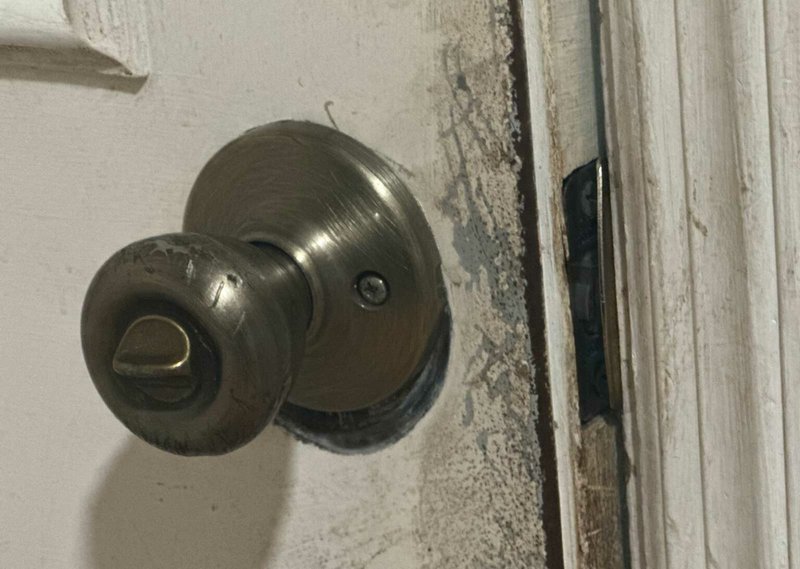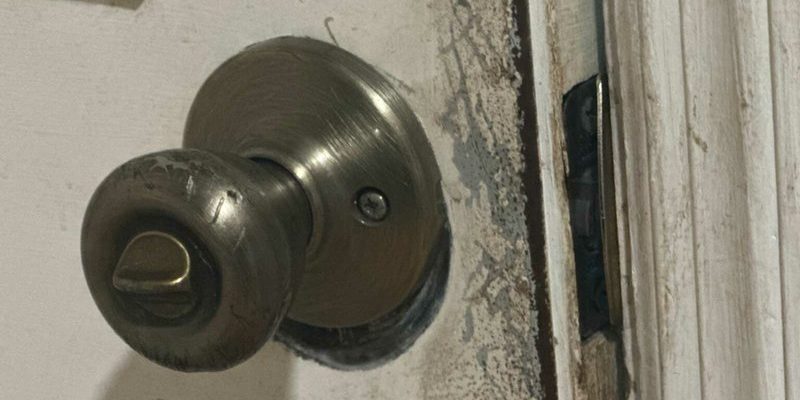
Here’s the thing: humidity can throw regular handlesets off, no matter if you’ve got a classic Schlage, Kwikset, or fancy smart entry set. Moisture in the air can mess with the wood, metal, and even the tiniest alignment inside the latching mechanism. It’s frustrating, for sure, but it’s also fixable—usually without needing a pro or a complete replacement.
Let me walk you through what’s really happening inside that stubborn handleset when the humidity spikes, and how you can get it latching smoothly again. We’ll even touch on some related topics, like basic troubleshooting steps, what tools can help, and quick fixes for both keyed and keyless models.
Why Humidity Messes With Your Handleset Latch
Ever notice how old doors seem to swell up on rainy summer days? Humidity is the culprit. Wood, which most doors are made from, soaks up moisture from the air. Even if you own a steel or fiberglass door, the wood frame inside or around it might expand a little when it’s humid. Here’s where problems start for your handleset latch.
When your door swells, it shifts just enough to mess up how the latch lines up with the strike plate (that’s the metal piece on your door jamb). If the latch or deadbolt was working perfectly last week, but now you have to push or lift the door to lock it, that tiny difference is humidity at work.
Handlesets from big brands like Kwikset or Schlage are designed for tight tolerances. They need the latch to slide smoothly, hit the strike plate, and snap in. Swelling puts everything out of sync, so the latch rubs, hits the wrong spot, or doesn’t reach deep enough to seat fully. The more humid it gets, the more your door and hardware go out of alignment.
If your handleset clicks and latches perfectly one season but acts up the next, don’t blame your installation skills—blame the weather.
Common Signs Your Handleset Is Struggling in Humidity
You might be wondering what “just won’t latch” really looks like. It’s not always as obvious as a door that won’t shut at all. Often, the symptoms creep up a little at a time:
- Door needs a hard slam: You find yourself throwing your weight against the door to get it to catch.
- Latch rubs or sticks: The handle turns, but you feel resistance—almost like it’s grinding.
- Latch doesn’t extend fully: From the edge of the door, you might notice the spring latch isn’t popping out all the way, or it’s catching on the strike plate edge.
- Lock won’t engage: You can’t turn your key unless you push or pull the door a certain way—sometimes you have to lean into it to align everything.
- No satisfying ‘click’: The door closes, but you never hear that familiar snap as the latch locks in place.
These quirks are your door’s way of asking for help. They can also mean that you’re putting extra strain on your handleset—leading to premature wear, bent components, or even a deadbolt that gets jammed. So, even if it’s “just a little off,” it’s worth fixing.
Quick Checks: Is It the Handleset or the Door?
Before you break out the toolbox or start searching for a replacement remote latch code, you need to pinpoint the problem. Sometimes, it’s not even the handleset’s fault!
Here’s a simple way to tell: Open the door and work the handleset while holding it in your hand—not installed. Press the latch with your finger and operate the handle. If it moves smoothly, the mechanism is probably fine.
Now, check these:
- Does the latch line up exactly with the strike plate? If not, the door has shifted.
- Is the strike plate bent, loose, or dirty? Gunk or a misaligned strike plate can catch the latch and block it from latching.
- Do you see any visible swelling or separation in the door or jamb? If the wood looks puffier than usual or the paint is cracked around the edges, that’s probably swelling from humidity.
Honestly, the most common cause is the door shifting and throwing everything just a hair out of line. But give the mechanism itself a quick test, just in case you’re dealing with a busted spring or worn internal part.
How To Realign a Handleset That Won’t Latch
Once you figure out the door is to blame for the latching issue, it’s time to adjust things. Most fixes are simple enough that you don’t need a code or a replacement battery—just a screwdriver and a level head.
Try these steps:
- Start by slightly loosening the screws on the strike plate.
- Close the door gently and see how far off the latch is from the plate opening. If it’s just a millimeter too high or low, you’ll see it.
- Move the strike plate up, down, or out as needed so the latch will center perfectly in the hole.
- Tighten the screws back down with the plate in its new spot.
If you still get resistance, try chiseling the mortise (the shallow groove under the plate) slightly larger so the latch has more room. Don’t get carried away—you want a snug fit, not a gaping gap!
Even a tiny adjustment—less than a quarter inch—can make your handleset latch work like new, even during swampy summer weather.
Lubrication: The Quickest Way to Smooth Out a Sticking Handleset
Sometimes, the problem isn’t alignment, but stickiness inside the hardware itself. Humidity can bring a tacky feeling or cause older, unlubricated parts to seize up. This goes for both mechanical and smart handlesets (yep, even those with electronic locks).
How do you fix it? Easy: Grab a can of spray lubricant made for locks (not WD-40—use graphite powder or a silicone-based spray). Squirt a little into the latch opening and the keyway. Turn the handle several times and work the latch until it feels snappy again. For digital keypads, avoid spraying anything near the electronics—focus on the bolt mechanism only.
- If you have a removable cover: Take it off and wipe down any obvious residue or gunk with a dry cloth.
- For older handlesets: Check inside for corrosion or old grease that can get gummy in the heat.
Let me explain why this matters: the internal parts are metal and can start to stick together or even rust a little when humidity hangs around. A quick coat of the right lube can extend your handleset’s lifespan (and save you from wrestling with your own door every morning).
When You Might Need a Handleset Reset or Replacement
Here’s where things get a bit more complicated. Sometimes, no amount of troubleshooting, code resets, lubrication, or alignment tricks will solve the problem. If the internal parts are warped, worn, or snapped—especially in older handlesets—a total reset or replacement becomes your best option.
- If you hear grinding, snapping, or feel “dead zones” in the handle: The internal components may be shot.
- Broken return spring: If the handle flops or doesn’t spring back, the latch mechanism is probably toast.
- Persistent electronic glitches (for smart sets): If battery swaps and code resets won’t fix keypad issues, the circuit board could be suffering from humidity damage, which is pretty common on cheaper or older smart remotes.
Here’s the thing: High-end brands like Schlage and Kwikset often sell repair kits, so you can replace just the broken part, not the whole handleset. If your lock set is a universal fit, you might even be able to swap in a new latch or strike without buying a whole new entry set. Always match the model number before you buy, especially if you’re using a code or keyed remote entry system.
Tips To Prevent Handleset Latching Problems Year-Round
You might be thinking, “Do I have to do this every summer?” Thankfully, you can take a few easy steps to keep humidity from messing with your handleset latching again.
- Seal and paint your doors regularly: A fresh coat keeps extra moisture out of the wood so it can’t swell and warp.
- Install a storm door: This blocks direct contact with humid air and helps keep the main entry more stable.
- Dehumidifiers near entryways: Even a portable unit in a mudroom or hallway can keep the whole area less sticky, especially in basements or shaded entryways.
- Seasonal checkups: Tighten loose screws, test battery life on smart locks, and do a quick alignment check every spring and fall.
If you’ve got a habit of doors sticking when storms roll in, add a little latch spray and a strike plate check to your seasonal cleaning list. Your future self will thank you when your handleset latches on the first try—no wrestling required.
What About Keyless, Smart, or Universal Handlesets?
Smart locks and keyless entry systems seem like they’d dodge traditional humidity problems, right? Not so fast. They still rely on the same basic latch and strike plate design beneath the electronics. If the door swells, the latch struggles just like a regular lock.
- Smart locks: Check the battery first—low power can make the motor too weak to throw the latch through a misaligned strike.
- Code resets: If the electronics act up, do a reset and re-pair according to the manual. Sometimes, power surges from humidity or condensation trip sensors inside.
- Universal entry sets: These usually mean the handleset is designed to fit multiple door types. This is great for standard repairs, but alignment is even more crucial, since the fit can be less precise than a brand-specific model.
Bottom line: Whether you’re wrestling with a Schlage keypad deadbolt, a Kwikset WiFi handle, or an old-fashioned keyed entry, all handlesets have one thing in common—a latch that needs to hit home every single time, regardless of the weather.
Bringing It All Together: A Little Routine Keeps Your Handleset Happy
Humidity is annoying, but it doesn’t have to win the battle with your front door. By understanding how swelling, stickiness, and misalignment creep in, you can troubleshoot a handleset that doesn’t latch in humid weather like a pro—even if you’re totally new to home repairs.
Give your handleset regular checkups, keep the moving parts clean and lubricated, and don’t be afraid to adjust the strike plate when the seasons change. With a little patience and the right tools, you can keep your entryway working smoothly year-round—rain or shine. And if your trusty Kwikset, Schlage, or smart remote lock ever throws you a curveball, now you know exactly where to start.
